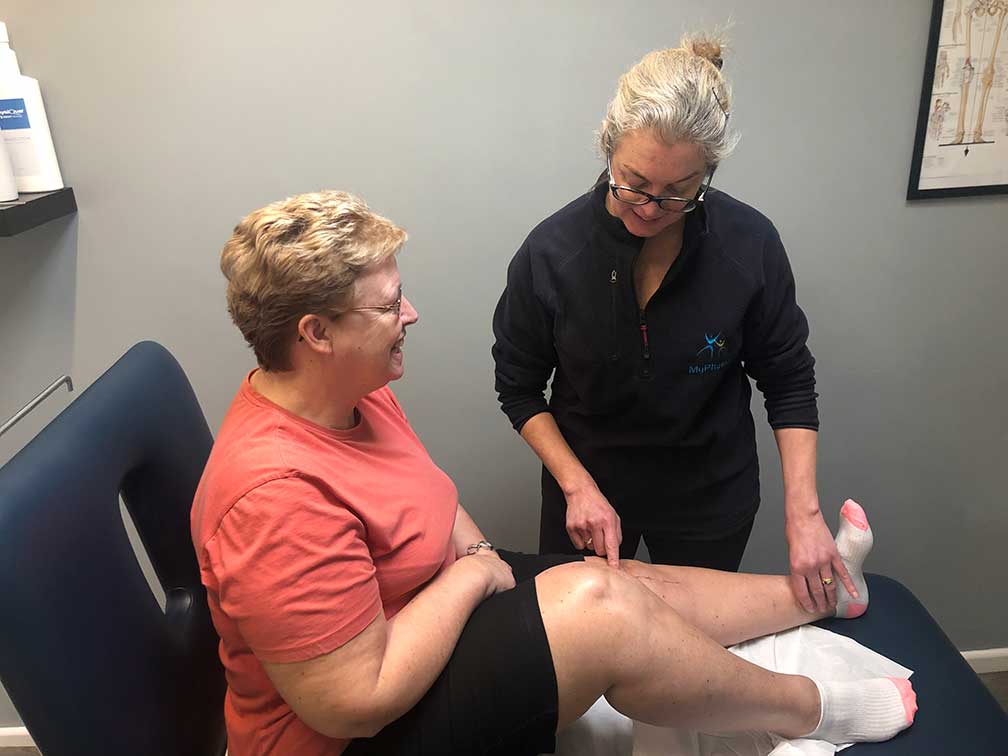Knee Ligament Injuries
There are number of ligaments with help support structures in and around the knee joint.
Ligaments are thick fibrous band of connective tissue, which connects one bone to another to support and prevent excessive movement within the joint in one or more direction.
The most commonly injured ligaments of the knee are:
Medial Collateral Ligament (MCL)
A thick fibrous band of tissue on the inside of the knee to prevent inside stressing of the knee originating from the inside of the femur (thigh bone) to the inside of the tibia (shin bone), this is soemtimes injured when your knee twists inwards suddenly, and common in football, rugby and badminton.
Lateral Collateral Ligament (LCL)
A thin band of tissue on the outside of the knee to prevent outward stressing of the knee originating from the outside of the femur (thigh bone) to the outside of the tibia (shin bone) This is rarly injured as it is so small and well protected, but we sometimes see it when there are big high velocity injuries.
Anterior Cruciate Ligament (ACL) – Posterior Cruciate Ligament (PCL) Cruciate ligament Injuries
The ACL is the main ligament that provides stability to the knee in forwards and backwards motion. It is the most common knee ligament injury, especially in athletes, footballers and particularly younger females like netballers.
Twisting rotational movements in sports like these are what cause the ACL to strain or tear. Strains can sometimes recover through Physiotherapy and muscle strengthening, though full tears almost always require surgery. The most common method for repairing ACL injuries is arthroscopic surgery. Other common injuries accompanying ACL tears are MCL, and knee cartilage tears (meniscus).
MyPhysio has a specialist interest in this area as Laura England has been doing her research in this field, and both Laura and Lizzy have worked extensively with athletes both pre and post surgery.
Meniscal tears
The meniscus is the circular shaped cartilage deep inside the knee joint sitting between the femur (thigh bone) and the tibia (shin bone.) The meniscus acts as a shock absorber between the two joints, and contributes to the stability of the joint when bending and twisting on the knee.
Cartilage tears are common in sport, with symptoms of locking, catching and giving way after a direct injury. Almost always a period of rest and physiotherapy will enable recovery without the need for surgery.
Tears that cause true locking where the knee gets stuck in one postion for a long period of time often need surgery and MyPhysio have the links you need to see the surgeons in relation to key-hole surgery (arthroscopy.)
It is more common to experience problems with the meniscus as you get older, the cartilage can thin and become more roughened with mini tears forming that can cause pain and restriction in movement. This is where physiotherapy can really speed up recovery.
MyPhysio are able to treat these knee problems to help you regain your movement with mobilisation, stretches and strength exercises, or refer you to a surgeon should the problem need key-hole surgery.

Knee Osteoarthritis
Knee Osteoarthritis is very common and is when you have wear and tear in your joint. The cartilage inside the knee becomes thinner and less shock absorbing, it is a normal and natural process as we get older.
The main complaint is pain and stiffness in the joint affecting mobility. There are many treatments available for Osteoarthritis, Mandy is our resident specilaist physiotherapist for arthritic type complaints.
MyPhysio are experts in diagnosing arthritis and treating it in its early and later stages with exercises, stretches, manual therapy and acupuncture. The NICE guidelines published recommend Physiotherapy as its prime way of treating Osteoarthritis.
Anterior Knee pain
It is relatively common to get pain termed anterior knee pain, which in essence means pain at the front of the knee. This can relate to the kneecap (patella) tracking awkwardly, early arthritis behind the kneecap, or a muscle imbalance for the 4 muscles termed the quadriceps.
Kneecap problems are often common in adolescent females, in runners ( runners knee) and athletes in jumping type sports (termed jumpers knee.)
These problems can be relatively easily treated with exercise and re-education of the muscles that can become weaker as a side effect of the pain.
MyPhysio can be your local specialty in this field with all of our physio’s being adept at treating this stubborn condition.
